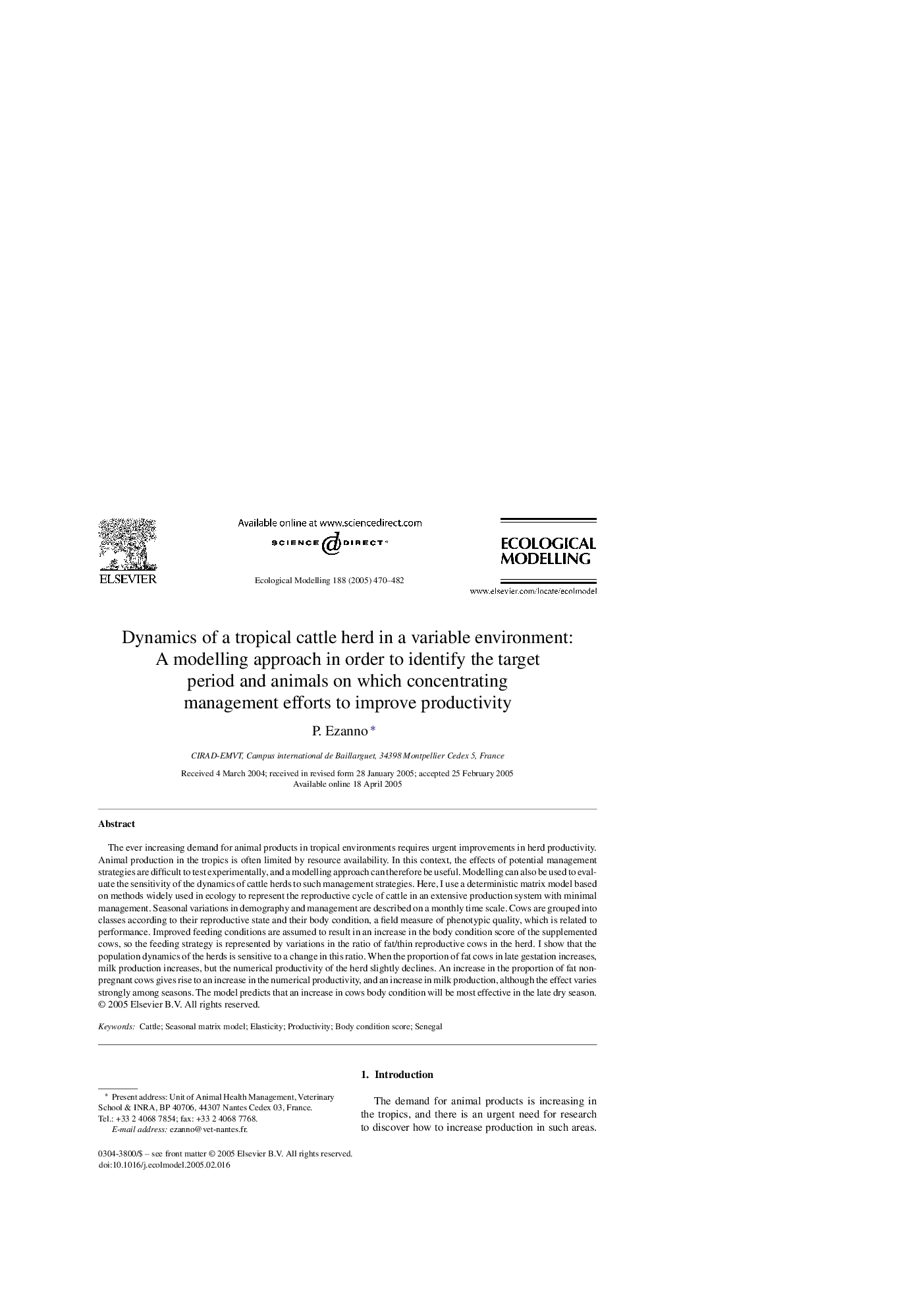| Article ID | Journal | Published Year | Pages | File Type |
|---|---|---|---|---|
| 9443530 | Ecological Modelling | 2005 | 13 Pages |
Abstract
The ever increasing demand for animal products in tropical environments requires urgent improvements in herd productivity. Animal production in the tropics is often limited by resource availability. In this context, the effects of potential management strategies are difficult to test experimentally, and a modelling approach can therefore be useful. Modelling can also be used to evaluate the sensitivity of the dynamics of cattle herds to such management strategies. Here, I use a deterministic matrix model based on methods widely used in ecology to represent the reproductive cycle of cattle in an extensive production system with minimal management. Seasonal variations in demography and management are described on a monthly time scale. Cows are grouped into classes according to their reproductive state and their body condition, a field measure of phenotypic quality, which is related to performance. Improved feeding conditions are assumed to result in an increase in the body condition score of the supplemented cows, so the feeding strategy is represented by variations in the ratio of fat/thin reproductive cows in the herd. I show that the population dynamics of the herds is sensitive to a change in this ratio. When the proportion of fat cows in late gestation increases, milk production increases, but the numerical productivity of the herd slightly declines. An increase in the proportion of fat non-pregnant cows gives rise to an increase in the numerical productivity, and an increase in milk production, although the effect varies strongly among seasons. The model predicts that an increase in cows body condition will be most effective in the late dry season.
Related Topics
Life Sciences
Agricultural and Biological Sciences
Ecology, Evolution, Behavior and Systematics
Authors
P. Ezanno,
